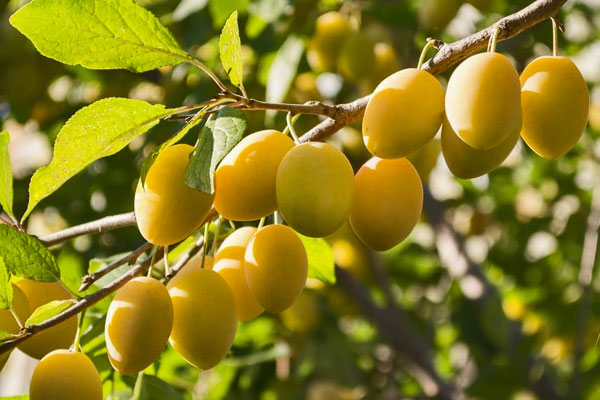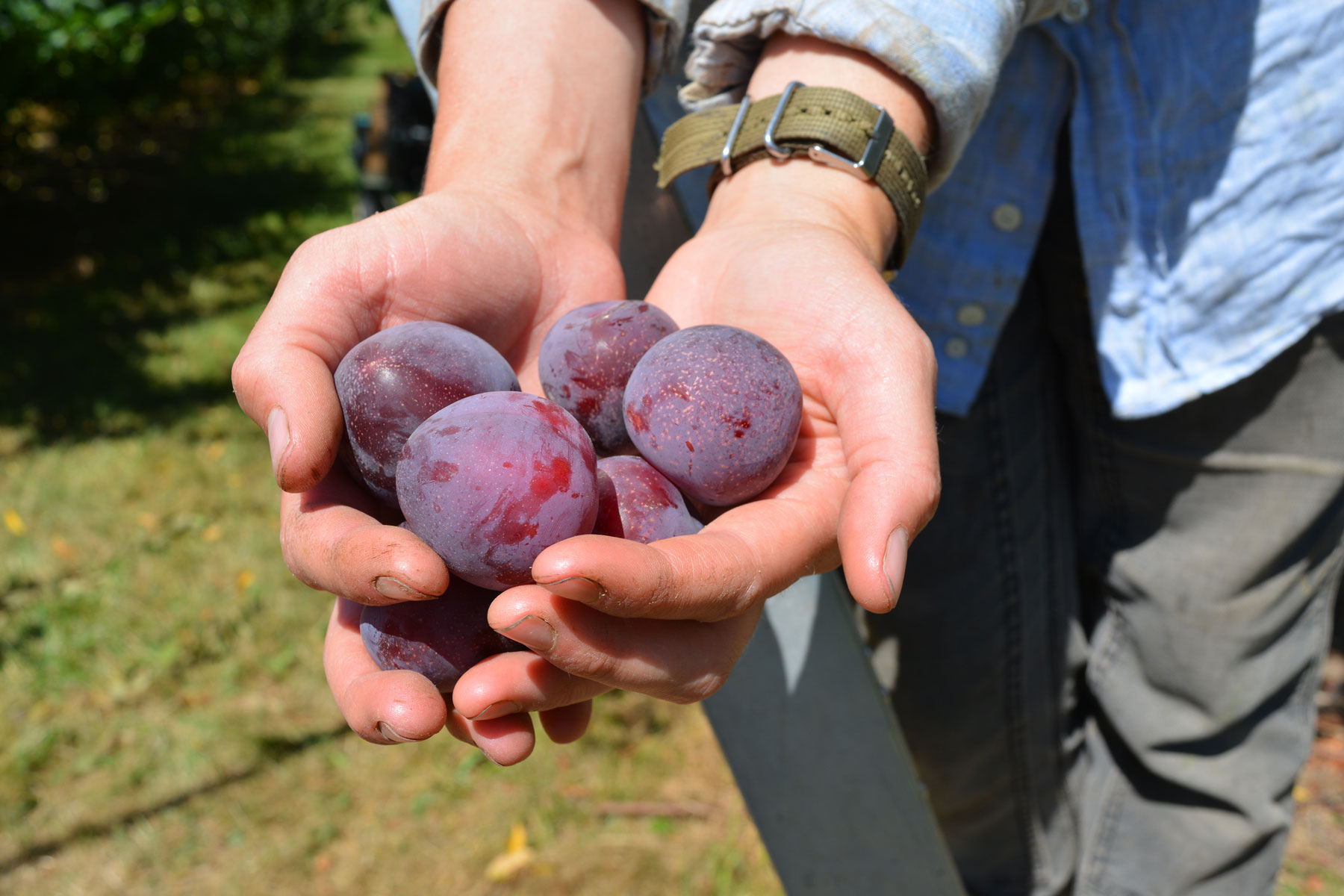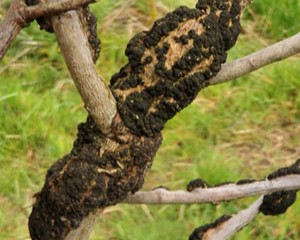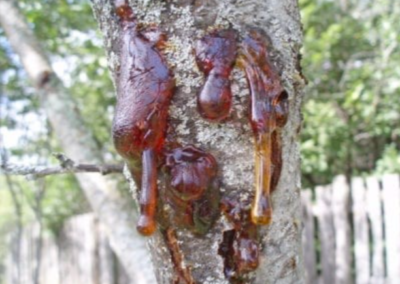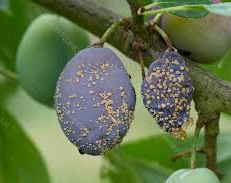Growing Plums
If you are just getting started, check out our fruit trees 101 page for beginner tips and terminology.
Pollination and Rootstocks
Check pollination requirements. Japanese plums will not pollinate European plums or vice versa as they bloom 2-3 weeks apart. Some plums are partially self-fertile; those will produce more as young trees if planted with a pollinizer. Fully self-fertile plums can be planted alone. Because plum trees bloom early, a site that does not get late frosts is best. Frequent frost during and after bloom will mean poor fruit set.
plum, peach, & apricot rootstocks
LOVELL A peach rootstock similar in size to K-86. Well anchored, best on well drained soils, grows to 15′. Space 12’–15′ at planting.
ST. JULIAN A (SEMI-DWARF) Precocious and productive and well anchored. Grows to 12’–15′. Space 10’–14′.
KRYMSK 86 (SEMI-DWARF) Slightly larger than St. Julian A. Well anchored and tolerant of heavy soil. Grows to 15′. Space 12’–15′.
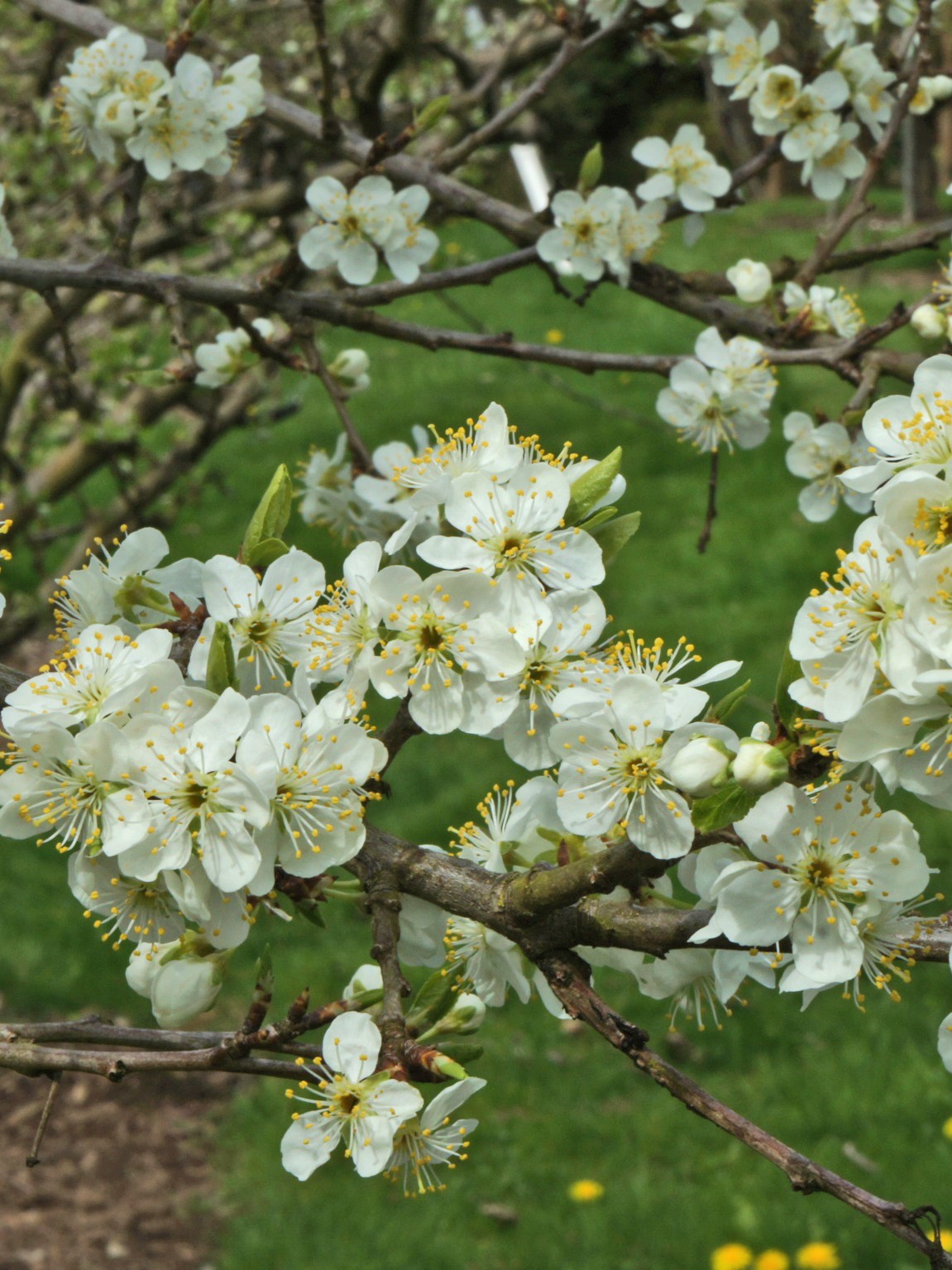
Pruning and Training
If you are new to pruning, check out our principles of pruning and training for basic concepts and definitions.
Plums are best trained in an Open Center system. All pruning should be done when there is a 48-hour period of dry weather after the cuts are made. This allows the cuts to dry and prevents disease. At planting, choose 3-4 evenly spaced branches to form the main trunks, or leaders. It is best to choose branches that are not too upright. Cut these back to 18“-24“ and remove all other branches. The first summer, after 12″ of new growth, pinch all but two shoots from each leader.
In the following years, prune after the trees bloom to remove broken or crossing branches and thin others to maintain good light and airflow. Keep the height of the tree in check by cutting back leaders to a non-fruiting lateral branch. In summer, remove water sprouts, suckers. Cut out any black knot (below).
Plums and prunes can have alternate years of light crops and heavy crops. During light crop years, it can be beneficial to pinch back or prune sprouts and suckers more vigorously as the tree is not spending as much energy producing fruit. In heavy crop years, it might be necessary to hand thin the fruit after set. Fruit that is crowded and touching is more subject to brown rot. It is also sometimes necessary to support branches that have heavy fruit loads.
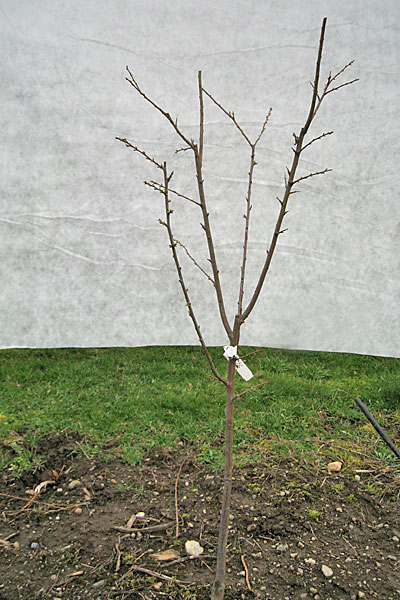
Fungal and bacterial diseases such as black knot, bacterial canker, and brown rot are the primary concern for plums. Cultural control is the best prevention: pruning reduces the humidity in the tree that can encourage fungal and bacterial growth, and orchard sanitation (cleaning up fruit and leaves) reduces the chance of reinfection. During the spring and summer months, watch for aphids, and control with horticultural soap or a strong jet of water.
Black Knot
Black Knot appears as warty black growth on branches. It is spread by wind from other diseased trees. If possible, remove diseased trees from the surrounding areas. If black knot appears on your trees, remove by cutting below the growths to remove them. Destroy and remove this wood from your property to prevent spreading. For severe infections, spray sulfur at petal fall.
Bacterial Canker
Bacterial Canker causes sunken cankers on the trunk and branches that may exude an amber-colored gum. Remove affected areas as you would for black knot. For severe infections, a copper spray can be applied.
Brown Rot
Brown Rot causes the fruit to rot at the blossom end (or bottom of the fruit) as it ripens. If you notice this on your fruit, remove and dispose of infected fruit. Apply a copper fungicide the following spring to prevent another infection.
For further guidance on pest and disease management and spray applications, refer to pnwhandbooks.org.
harvest
Fruit will shift color and go from hard to firm when approaching ripeness. The best ways to judge ripeness is by tasting, a slight squeeze for texture, or the dropping of fruit. Most plums will not ripen further once picked. Some plums will store a few weeks in the refrigerator but are best eaten or processed shortly after picking. When plums are ripe, birds, squirrels, and raccoons can become a problem. Flash tape or shiny material hung in the tree can help deter birds.
